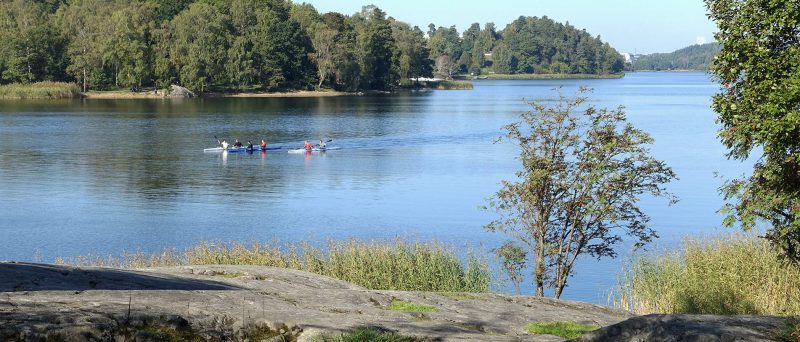The principle of sedimentation is the same as in drinking water production, and the method is used to improve the water quality in lakes in Sweden, Denmark and internationally. Good water quality in the lakes means good conditions for animals and plants that live in and around the lakes.
Lakes with too high a phosphorus content are cloudy, which is a challenge for both fish and plants. A well-known technique for addressing the problem is to add aluminium and, by sedimentation, reduce the phosphorus level and so the risk of eutrophication (over-fertilisation of lakes and marine areas with plant nutrients, especially nitrate and phosphate that causes planktonic algae to form).
Water Treatment of Brunnsviken
The method has been used in many Danish lakes, and the Danish contractor TAV (Thomas Aabling Aquatic Environment) has been awarded the job of treating the large Swedish lake Brunnsviken, just north of Stockholm. The lake is a 3.5 km long, 0.4–0.5 km wide brackish water lake, and it is the three surrounding municipalities that have joined forces on the project. Poly aluminium chloride is supplied by Danish company Alumichem, which is part of the Norlex Group.
The Swedish municipalities have chosen the method as the most cost-effective as the goal is to achieve a good ecological status.
The problem of phosphorus in the lakes
Phosphorus is often the nutrient that restricts algae growth in lakes. When a lake is supplied with too much phosphorus, the production of algae (phytoplankton) increases and the water becomes cloudy. The numerous algae adversely affect the entire food chain in the lake, causing poorer conditions for the underwater plants that are simply shaded away, and wildlife is also affected. Fish such as roach and bream become dominant in relation to the predatory fish such as perch and pike.
Water treatment with poly aluminium chloride
The process is to add a poly aluminium chloride solution that binds to phosphorus. The solution is pumped out from a boat down to a spreader boom that is dragged behind the boat through the lake. The sediment that forms in the water falls and settles on the bottom. All surfaces deeper than five metres are treated. The bound phosphorus becomes permanently bound to the aluminium being added and so cannot contribute to continued eutrophication.
The principle is the same as in drinking water production, and the method is used globally to improve water quality in lakes.
A proven method of reducing phosphorus
Sedimentation with poly aluminium chloride is a proven method of binding phosphorus in water masses so that it can no longer contribute to eutrophication. In a short time, the action is expected to result in lower phosphorus levels in the water, reduce algae blooms and have a visibly positive effect on the water quality with an increased Secchi depth, which is a measure of water clarity or transparency and determines how far the light can penetrate the seawater. The Secchi depth becomes an indirect measure of the number of algae in the water. The fewer algae, the greater the Secchi depth and so the better the water quality.
The Secchi depth is measured by lowering a special white disc into the water. The depth at which you can no longer see it anymore is called the Secchi depth. The concentration of nutrients is tested by taking water samples, which are analysed for, amongst other things, phosphorus, nitrogen, organic matter, etc. The risk of algae blooms and so cloudy water is related to the content of phosphorus and nitrogen nutrients.
With the heavy and prolonged rainfall there has been in Denmark in recent months, a large number of streams and lakes have burst their banks. The plentiful supply of water is partly due to the fact that the soil is so saturated that it cannot absorb more water. Therefore, nutrients from the fields are fed to streams and lakes, and the need for treatment will increase.











